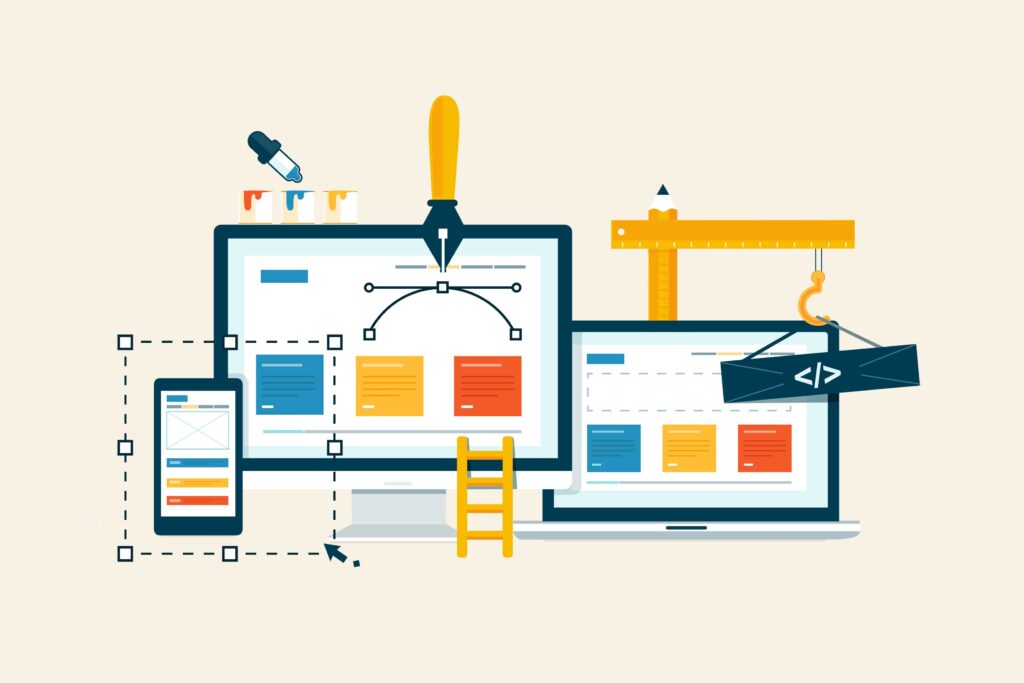A website is often the first interaction people have with a business. It’s where potential customers go to learn about what you offer, and it plays a critical role in shaping their perception of your brand. A well-built and designed website can create a strong first impression, engage visitors, and encourage them to take action. On the other hand, a poorly designed website can drive people away before they even get to know your business.
Web design isn’t just about aesthetics. It’s about functionality, user experience, and ensuring that visitors can easily find what they need. A thoughtfully designed website builds trust, strengthens your brand, and helps convert visitors into loyal customers. Here’s why web design is one of the most important investments you can make for your business.
First Impressions Matter
When someone visits your website, they form an opinion about your business within a few seconds. If the design looks outdated, cluttered, or unprofessional, they might assume the same about your products or services. A smooth, modern design instantly communicates reliability and competence, making visitors more likely to stay and explore.

Simple elements like consistent colors, readable fonts, and an organized layout can make a big difference. Visitors should feel comfortable and confident when browsing your site. If they do, they’re more likely to trust your business and take the next step, whether that’s making a purchase or contacting you for more information.
The Role of User Experience
A visually appealing website is important, but it isn’t all you need. A good design prioritizes user experience (UX), ensuring that visitors can navigate the site smoothly. Think of your website as a physical store—if customers can’t find what they’re looking for, they’ll leave.
Navigation should be intuitive, with clear menus and logical pathways. Pages should load quickly, and the site should work well on all devices, from desktops to smartphones. A responsive design is essential, as more people are browsing the web on mobile devices.
When visitors have a smooth experience, they’re more likely to stay longer, explore your offerings, and ultimately convert into customers.

Building Trust Through Design
Trust is a critical factor in any business relationship, and your website plays a big role in establishing it. A poorly designed site can raise doubts about your credibility, while a professional-looking site reassures visitors that your business is legitimate and trustworthy.
Details like high-quality images, clear messaging, and testimonials from satisfied customers can make a big difference. Security features, such as SSL certificates, also show visitors that you take their privacy seriously.
A trustworthy website doesn’t just attract visitors—it turns them into loyal customers who feel confident recommending your business to others.
Showcasing Your Brand Identity
Your website is one of the most effective tools for communicating your brand’s personality. Every element, from the color scheme to the tone of the content, should reflect who you are as a business.
For example, a tech company might use clean lines and minimalist design to convey innovation, while a family-owned bakery might opt for warm colors and playful fonts to create a welcoming feel. Consistency is key—your website should align with your overall branding, including your logo, social media presence, and marketing materials.
A cohesive brand identity makes your business more memorable and helps you stand out in a crowded market.
Reaching Mobile Users
The number of people browsing the internet on their phones has risen significantly in recent years. If your website isn’t optimized for mobile devices, you risk losing a significant portion of your audience.
A mobile-friendly website adapts to different screen sizes, ensuring that it looks great and functions smoothly on any device. This isn’t just important for user experience—it also impacts your visibility on search engines. Google and other platforms prioritize mobile-friendly websites in their rankings, so if your site isn’t responsive, it could hurt your search engine optimization (SEO) efforts.
Investing in a mobile-friendly design ensures that you’re reaching as many potential customers as possible, no matter how they’re browsing.

The Connection Between Web Design and SEO
Web design and SEO go hand in hand. A well-designed website is easier for search engines to crawl and index, which can improve your rankings and make it easier for people to find you online.
Factors like fast loading speeds, clear navigation, and properly structured content contribute to better SEO performance. Even visual elements, such as images, can impact your rankings if they’re not optimized with appropriate file sizes and alt text.
SEO isn’t just about keywords—it’s about creating a website that provides value to users. The more user-friendly your site is, the more likely it is to attract organic traffic and keep visitors engaged.
Encouraging Visitor Action
A great website doesn’t just look good—it drives results. Whether you want visitors to make a purchase, sign up for a newsletter, or schedule a consultation, your design should guide them toward that goal.
Clear calls-to-action (CTAs) are essential. These might include buttons like “Shop Now,” “Get Started,” or “Contact Us.” The design should make these CTAs stand out while keeping the overall layout clean and uncluttered.
When visitors know exactly what to do next, they’re more likely to take action, helping you achieve your business objectives.
The Risks of Poor Web Design
A poorly designed website can do more harm than good. Visitors might leave out of frustration if the site is hard to navigate, slow to load, or unappealing. Worse, they might share their negative experience with others, damaging your reputation.
An outdated or unprofessional website can also make it harder to compete in your industry. If potential customers see a competitor’s polished, user-friendly site, they’re more likely to choose them over you.
Investing in quality web design helps you avoid these pitfalls and ensures that your website reflects the professionalism of your business.
Staying Competitive in a Digital World
Your competitors are likely investing in their websites, and if you’re not keeping up, you could be left behind. A well-designed site gives you an edge, helping you stand out and attract more customers.
Web design trends evolve, so it’s important to keep your site up to date. Regular updates ensure that your site stays fresh, relevant, and aligned with current user expectations.
By staying ahead of the curve, you can position your business as a leader in your industry and build a strong online presence.
The Long-Term Benefits of Great Web Design
A professionally designed website isn’t just a short-term investment—it’s a long-term asset for your business. It helps you attract and retain customers, build trust, and grow your brand.
Over time, a well-designed site can save you money by reducing the need for constant updates or redesigns. It can also generate significant returns by increasing conversions and driving more traffic to your business.
When you invest in quality web design, you’re investing in the future of your business.

Final Words
A website can and should become a tool for creating a business brand and connecting with customers. Indeed, there are a few things you should consider and focus on – user experience, mobile optimization, and SEO. You can create a site that not only looks great but also delivers results. A well-designed website sets you apart and helps you achieve your goals. Whether you’re starting from scratch or updating an existing site, investing in web design is one of the smartest decisions you can make for your business.